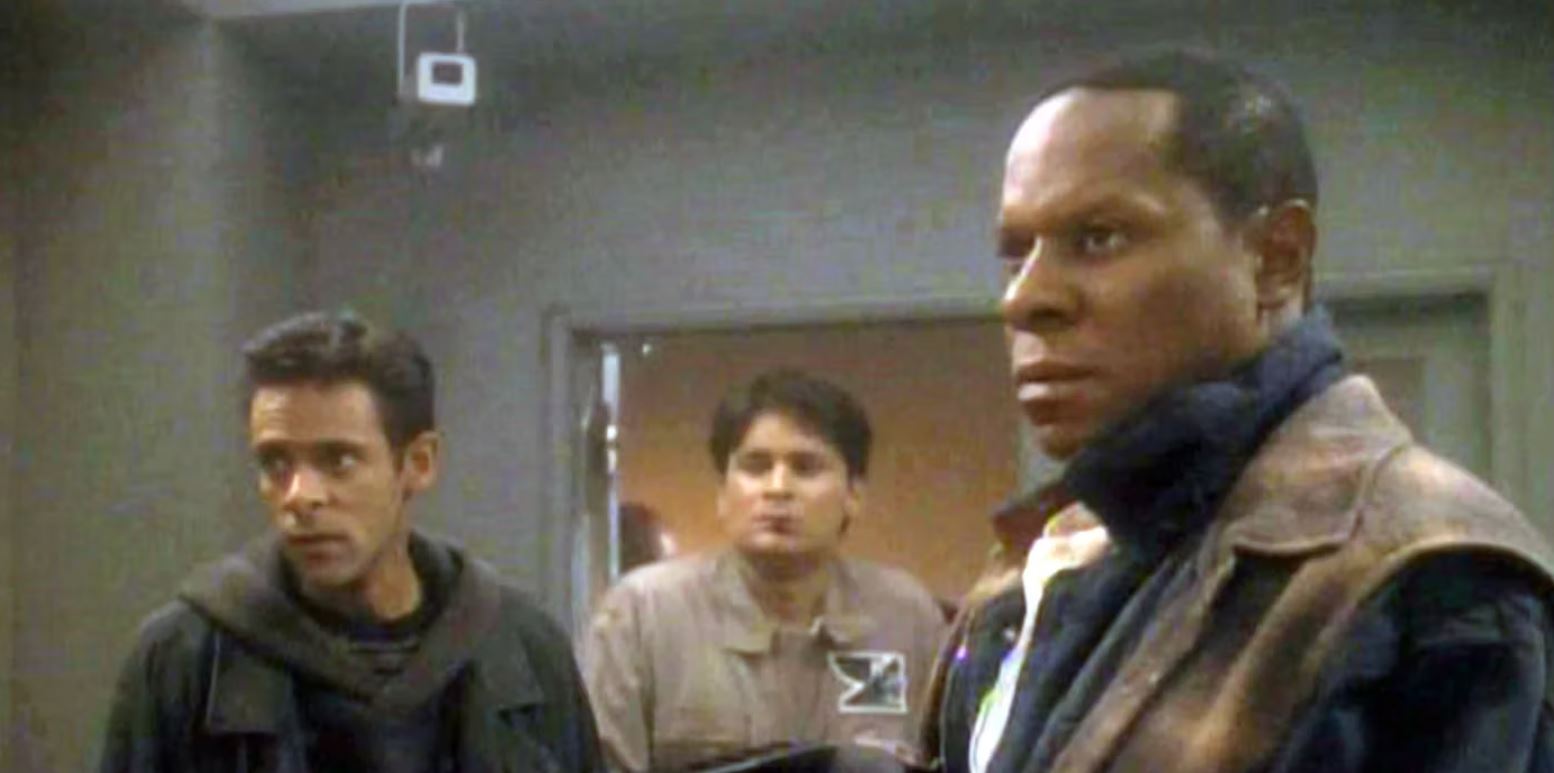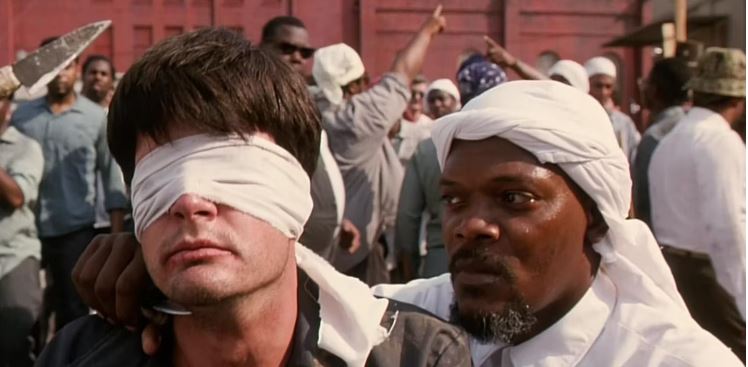Star Trek is often at its best when it’s using a glimpse into the future to examine the modern era. It’s a utopian series that inspired several subsequent generations to have hope for what’s to come. While humanity has failed to meet most of those expectations, a lot of the social commentary rings true today. One of the sharpest and most incisive episodes in the franchise is Deep Space Nine’s “Past Tense.” The central event of the episode is the Bell Riot, the distant catalyst that led to Starfleet.
Glimpses into the future from the past vary wildly. Looking at movies between 30 and 60 years ago, their imagined version of the 2020s is often even more unpleasant than the real one. Soylent Green takes place in a dystopian 2022 that feels only five or six years early. Harlan Ellison’s 1969 novella A Boy and his Dog pitched a fourth world war that broke out in the late 2000s, leaving 2024 firmly in irradiated wasteland territory. Star Trek’s take on the era is a lot sharper.
What were the Bell Riots in Star Trek?

The Bell Riots were a series of long-overdue uprisings against a nightmarish system of internment that the American government used to round up unhoused people. The massive social problems that consumed America in the 2010s led to the Sanctuary District system. Portions of every major American city became underfunded camps that held anyone who couldn’t afford to live. Those areas were initially established to provide everything an unhoused person would need, but they quickly became overcrowded, destitute, and violent as their inhabitants fought to survive. The poor, sick, and unhoused people rotted just out of sight of the rich and powerful. Tensions finally boiled over in 2024, leading to a wave of righteous violence that finally forced the American public to demand radical change.
On September 1st, 2024, a guard assaulted a San Francisco Santuary District resident experiencing a mental health crisis. A group of violent men calling themselves ghosts overpowered the guards and seized their weapons. Within minutes, the coordinated locals captured the processing center and kept control over the district. Gabriel Bell, the riot’s namesake, and Michael Webb became the faces of the operation and interacted with a police negotiator. Over the following 48 hours, a media mogul named Chris Brynner broadcast live footage of the riot from within the Sanctuary District. This included several in-depth interviews with those who’d suffered within the camps for years. Americans finally learned the truth about the Sanctuary Districts, leading to several concurrent riots across the United States. Finally, on September 3rd, the governor of California called in the National Guard. Hundreds of people died, including Bell, who would become a martyr for his cause. Though it was a brief encounter, it had a massive impact.
What inspired the Bell Riots?

The two primary points of inspiration for DS9’s Bell Riots are the 1971 Attica Prison riot and the 1970 Kent State shootings. Attica is probably the most memorable prison uprising in US history. Roughly 1,281 incarcerated individuals seized control of half of the prison, holding over 40 civilians hostage. They elected leaders, issued demands for better treatment, and allowed several inmates to give powerful speeches. The inmates wanted things like better food, fewer openly racist guards, the right to participate in politics, religious freedom, basic access to toiletries, and educational or work training programs that could make prison rehabilitative. The negotiations reportedly broke down over the idea of offering amnesty to the rioters. New York Governor Nelson Rockefeller gave Commissioner of Corrections Russell Oswald permission to take Attica by force. As a result, police killed 35 people. They also subjected several survivors to torture, including some cases of sexual violence. Many of the records relating to the Attica Prison massacre are still sealed today. While a few requested changes occurred over the following years, many were quickly reversed. Inmates in Attica still fight against the shifting conditions.
Attica provided writers Robert Hewitt Wolfe, Ira Steven Behr, and René Echevarria with the basic set-up of their ideas. They wanted a Deep Space Nine episode about the homelessness crisis in the United States. They imagined many ways to tell that story, eventually landing on a concentration camp concept. Like Attica, the people of the Sanctuary District were mistreated, but their suffering occurred beyond the gaze of the average American. This allowed most to ignore their suffering, with the prison/camp providing them with the benefits of blissful ignorance. The 1970 mass shooting of Kent State anti-war protesters by the National Guard provided a bit of additional context. Four died and nine were injured in that attack, but its influence on the war was massive. Other protests exploded across the US, gradually demonstrating the death of support of the Vietnam War. These horrific events became the backbone of Star Trek’s prediction of the future.
What was the legacy of the Bell Riots?

The plot of “Past Tense” sees three members of the show’s crew slip through time and wind up in the San Francisco Sanctuary District. They take great pains to avoid interrupting the historically crucial event by blending in and allowing many deaths to occur. Commander Ben Sisko takes Gabriel Bell’s place, convincing a guard to place Bell’s identification on a corpse to guarantee the martyrdom story. While they’re stuck in the past, other members of the crew hover in a unique time bubble in space. This allows them to see the alternate timeline that would exist without the Bell Riots. The Bell Riots resulted in a widespread uprising against the Sanctuary District system, forcing America to finally address the massive social problems that led to the epidemic. A timeline without the Bell Riots is also a future without Starfleet. This is a fairly radical statement for a 1995 episode of TV. The utopian future of Star Trek, the one that everyone agrees is essentially perfect, hinges entirely on a violent uprising by an unhoused and mistreated population. The show outright states that only armed revolution can break America out of its cruelty and greed long enough to move toward the ideal spacefaring reality.
If Star Trek is even moderately accurate, America is in for a very unpleasant month. At the time of writing, DS9’s uprising is sixteen days away. It’s hard to believe it’ll happen in the real world, but the conditions feel very right for it. Attica and Kent State were very real. Their DNA remains in the modern political environment, as readily as it does in the DNA of “Past Tense.” It might be worth it to watch the Bell Riots again and take a few lessons. The worst part is imagining how little would come out of Bell’s sacrifice in the modern era. Imagine the New York Times headlines and try not to cry.
